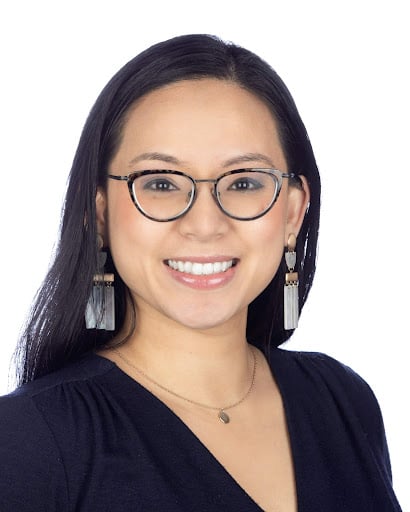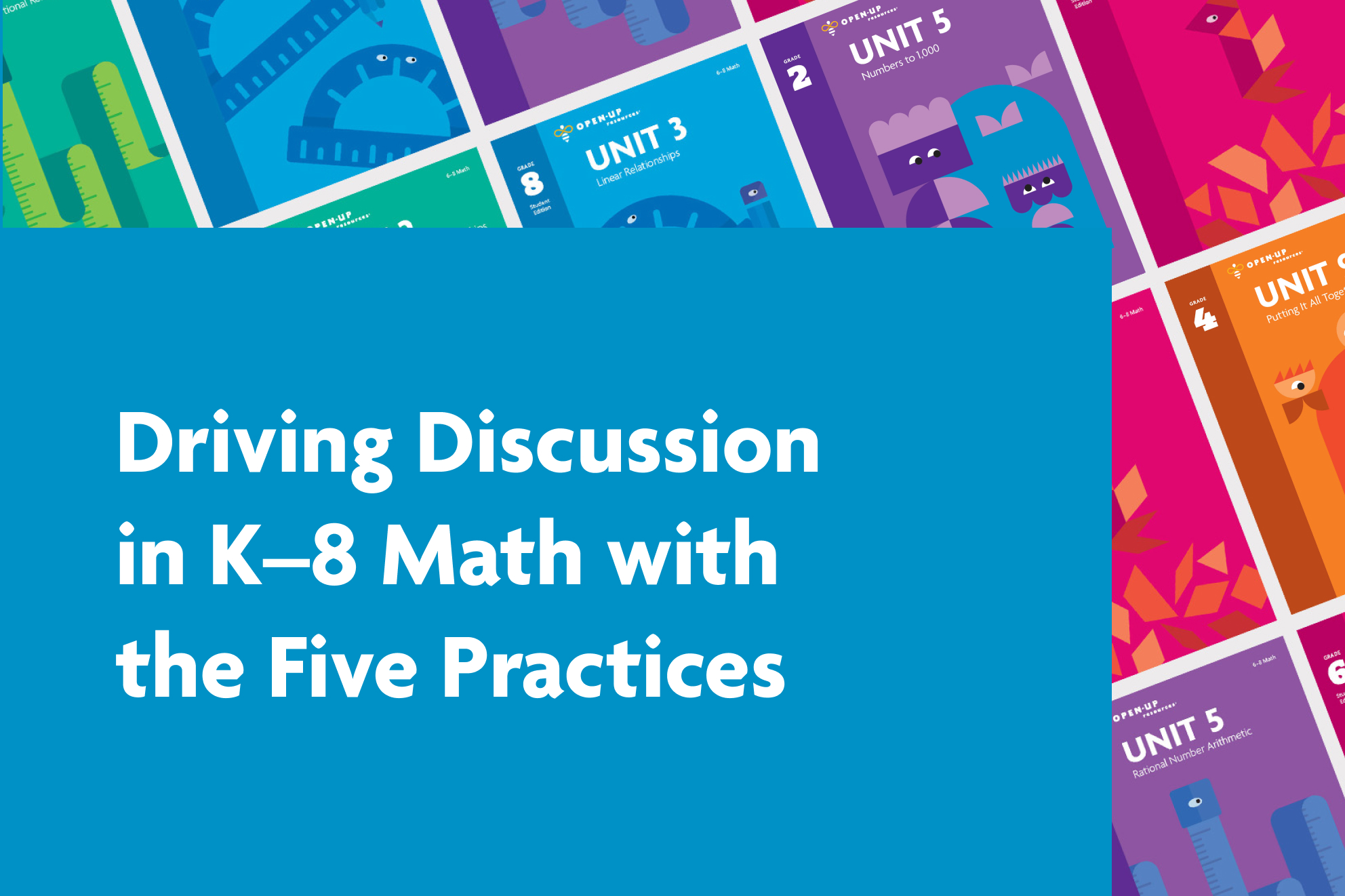This is the second in a multi-part series which reflects on the first months of implementing a new curriculum.
- Read Part 1: Staying the Path When You Hit the Inevitable Hurdle
- Read Part 3: Creating a Culture of Discourse and Community
- Read part 4: What’s Fidelity Got to Do with It?
“Noticing” is something that teachers do everyday as a part of practice. We notice student engagement, student thinking, social interactions, their interests and dislikes, and more. There is a lot that teachers are attending to, particularly when implementing a new resource, but it is what we choose to notice that has the greatest impact on learning.
In “Supporting Teacher Noticing of Students’ Mathematical Strengths,” Lisa Jilk makes an argument that we are culturally taught to notice “deficits not only in classrooms but also in our daily lives” (2016, p. 189). Ladson-Billings supports this observation when she discusses how the educational field often frames the question as “What’s wrong with these kids?” rather than “What is right with them?” (Virtual AP Leadership Academy, 2022). As a culture, we tend to look for mistakes, misunderstandings, shortcomings in our children in the classroom rather than the strengths and knowledge that they bring. In those first difficult months when the learning is new for you and your children, it is even easier to fixate on the negative. Disequilibrium is uncomfortable. Learning something new is uncomfortable. But let’s not conclude that discomfort and messiness means that learning is not happening.
It is easy when implementing a new curriculum – when our eyes perceive what looks like children struggling or failing – to conclude that the curriculum doesn’t work. We sometimes hear this a couple of months into onboarding, when the vision of children getting comfortable and learning just taking off doesn’t come fully into fruition. We want to challenge you in these moments to take a pause, and notice what you notice. What do you notice in your classroom? What do you fixate on?
We think about a recent experience in a third grade classroom. Children were in Unit 2, Lesson 5 working to develop multiplicative reasoning as they solve problems involving area. Activity 2 prompts them to draw a 6 by 3 rectangle on a grid and then find its area, as shown in the work sample below.
.png)
One third grader drew a 6 by 3 rectangle. As teachers circulated, they watched the children count each individual square unit, up to 18. Reflecting with the other teachers in the classroom, they shared their worry and disappointment that this child was not using multiplication to solve. “How am I supposed to get my kids to third grade standards when they are still counting each one?”
When the focus of the unit is on multiplicative reasoning, it may be challenging to watch children counting each square in order to find the total and not worry. Particularly for teachers new to the curriculum, noticing what children cannot yet do can cause anxiety about whether learning goals will be met, assessments will be passed, and whether the curriculum can meet their needs.
What happens, however, if we were to shift our perspective away from looking for the gaps (Gutiérrez calls this the gap-gazing fetish in mathematics education) to noticing what our children can do instead? Jilk calls adapting this positive perspective of what our children can do adapting a “strengths-based lens.”
Take another look at the work sample above. What does this child understand? Instead, take another look at this child’s work, and notice what they are able to do.
Did you notice the student . . .
- Accurately drew a rectangle on the grid that matched the given expression?
- Correctly counted by ones without skipping or repeating to reach a correct total?
- Used the model to support them in finding the answer?
Shifting our vision to see what our students can do honors their abilities and allows us to build on these strengths to help promote new understandings.
It allows us to recognize the mathematical conceptions that are there, and to use those conceptions as a foundation from which to further develop understanding and mathematical connections. Even for this child counting each square unit, there are opportunities to elicit conversations about efficiency, repeated addition and multiplicative reasoning. And that’s what is going to build conceptual understanding. Even more, the intentional spiraled design of the curriculum means that students get continued opportunities to draw further conceptions about multiplicative reasoning over time. These opportunities would not be existent if the curriculum simply gave students multiplication problems absent of context to solve.
In Unit 2, there are many opportunities for developing mathematical connections. In this lesson alone, however, children make connections in the synthesis when they think about how the area of each rectangle matches the expressions. They compare and contrast as they share out and discuss similarities between rectangles with the same area that are oriented differently. Each part of the lesson is another chance to enrich their learning, to connect the counting to finding the total that they are demonstrating with multiplicative reasoning. And remember, this is just Lesson 5!
Grade-level standards, pacing guides, and assessments help give us a ballpark from which we can measure student progress, but our children – like us – are individuals who develop conceptions differently and at different rates. Particularly when the curriculum is also new and unfamiliar, we can expect that children (and ourselves as teachers) will need even more time to adjust. Implementing a new curriculum with integrity requires us to be patient as a new way of learning becomes familiar (Chan, 2017). This means being patient with our children, with the curriculum – and with ourselves.
Mathematical concepts are not meant to be learned in isolation, and there is not one right path for learning. Our children come to us with real conceptions (not misconceptions) – we just have to notice them. Even more, their conceptions matter, whether or not their learning doesn’t fit our ideal timetable and plans. Adjusting to a strength-based lens helps shift our focus away from what is missing, and helps us to witness the knowledge that our kids do bring into the classroom. Jilk points out the need to be able to be comfortable naming them genuinely as mathematical strengths, and to count them as important (p. 195). When we do, we can over time, develop students’ confidence which serves as the catalyst for their learning and success.
In the next part of this blog series, we’ll dig into creating a culture of discourse and community in your classroom. In the meantime, share your reflections with us about what a strength-based lens means to you using the #OpenUpMath, and learn more about our professional learning offerings on the Open Up Resources website.
References
Chan, J. (2022, September 8). 3 common misconceptions about high-quality instructional materials.
EdReports. Retrieved November 8, 2022, from https://www.edreports.org/resources/article/3-common-misconceptions-about-high-quality-instructional-materials
Jilk, L. M. (2016). Supporting teacher noticing of students’ mathematical strengths. Mathematics
Teacher Educator, 4(2), 188–199. https://doi.org/10.5951/mathteaceduc.4.2.0188
Virtual AP Leadership Academy. (2022, November 8). Dr. Gloria Ladson-Billings | A Conversation With
an Education Legend. YouTube. https://www.youtube.com/watch?v=q_2dDrxr_jM&t=4746s.
 Vi Tamargo (@vi_tamargo)
Vi Tamargo (@vi_tamargo)
Professional Learning Math Specialist Academics, Equity & Social Justice Team
During her years in the classroom, Vi served K–8 grade students from Oregon to New York, with a specific focus on mathematics education. She also served as an instructional coach and math interventionist. Helping each child and educator find a love for mathematics was what inspired her daily. She now brings that commitment into her work at Open Up Resources, thinking innovatively about how professional learning can be a catalyst for equity, access and mathematical joy. An Oregon native, she now resides in California with her two young children and her husband. Vi enjoys Barre3, running, writing, crocheting, and discovering new coffee shops and food spots.

Ally Lewis (@allyelewis)
Teacher Leader in Residence, Academics, Equity, & Social Justice Team
Ally is a bilingual educator and worked in Title 1 schools for 9 years in Denver and Aurora, CO. She has taught elementary and middle school mathematics (using Open Up Resources), and served as a mathematics instructional coach for teachers in grades K-8. Her interests and research are centered around the impacts of language, race, & identity in math teaching and learning. Ally is passionate about the Open Up Resources curriculum and mission and joined the team in 2021 as a reviewer for the K-5 math units. She is now a full-time Teacher Leader in Residence, supporting schools and districts across the US.













